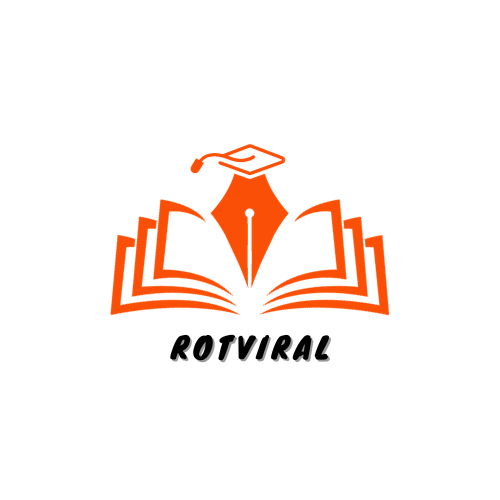You will be redirected to borrowbrilliant soon!
Subheading: The Dawn of PHP: A Historical Perspective
PHP, an acronym for “Hypertext Preprocessor,” is a server-side scripting language that has been the cornerstone of web development since its inception in 1994. It’s a language that has evolved with the digital age, adapting and growing to meet the ever-changing demands of the online world. Its versatility, simplicity, and robustness have made it a stalwart in the realm of web development.
Title: “The Renaissance of Web Development: A Journey Through PHP’s Illustrious History”
Introduction: The Dawn of a New Era
In the grand tapestry of web development, one language has consistently woven its threads through the fabric of the internet: PHP. Born from the creative mind of Rasmus Lerdorf in 1994, PHP has evolved from a humble set of Common Gateway Interface (CGI) binaries into a full-fledged scripting language that powers a significant portion of the web. This is a tale of innovation, resilience, and the relentless pursuit of simplicity.
Chapter I: The Genesis of PHP
PHP, an acronym for “PHP: Hypertext Preprocessor”, began its journey as a simple tool for maintaining Lerdorf’s personal homepage. Its initial incarnation, known as “Personal Home Page Tools”, was a far cry from the powerful language we know today. Yet, even in its infancy, PHP embodied a spirit of practicality and ease-of-use that would become its defining characteristics.
Chapter II: The Evolution of a Titan
The metamorphosis of PHP into a titan of web development was not an overnight phenomenon. It was a gradual process, fueled by the contributions of a vibrant community of developers. The release of PHP 3 in 1998 marked a significant milestone in this journey. With a rewritten parser and a more robust extension API, PHP 3 laid the foundation for the language’s future growth.
Chapter III: The Rise of a Powerhouse
The dawn of the new millennium brought with it the release of PHP 4. With the introduction of the Zend Engine, a scripting engine that forms the core of PHP, the language gained new heights of performance and reliability. This version solidified PHP’s position as a powerhouse of web development, powering major websites like Yahoo and paving the way for its widespread adoption.
Chapter IV: The Age of Maturity
The release of PHP 5 in 2004 marked the language’s transition into maturity. With the introduction of improved object-oriented programming, exception handling, and the inclusion of the Standard PHP Library (SPL), PHP 5 offered developers a more sophisticated toolset for building complex applications. This era saw PHP becoming the backbone of iconic platforms such as WordPress, Drupal, and Joomla.
Chapter V: The Modern PHP Renaissance
With the advent of PHP 7 in 2015, the language underwent a renaissance. PHP 7 brought with it a host of improvements, including significant performance enhancements, scalar type declarations, and return type declarations. These advancements, coupled with the language’s enduring simplicity, have ensured PHP’s relevance in the modern web development landscape.
Conclusion: The Legacy of PHP
As we stand on the precipice of PHP 8, we look back on a journey marked by innovation, evolution, and resilience. PHP’s story is a testament to the power of a community-driven project and the enduring appeal of a language that prioritizes practicality and simplicity. As we look to the future, one thing is certain: PHP will continue to shape the web for years to come.
This brief exploration of PHP’s illustrious history is but a glimpse into the rich tapestry of its evolution. From its humble beginnings to its current status as a cornerstone of the web, PHP’s journey is a testament to the power of innovation and the resilience of the web development community. As we continue to push the boundaries of what’s possible on the web, PHP stands as a beacon of possibility, illuminating the path forward.
Subheading: The PHP Advantage: Unparalleled Flexibility and Scalability
PHP’s flexibility is one of its most compelling features. It is platform-independent, meaning it can run on any operating system, be it Windows, Linux, or MacOS. This cross-platform compatibility ensures that PHP applications can reach the widest possible audience. Moreover, PHP is compatible with all major web servers and supports a wide range of databases, making it a versatile choice for any web development project.
Title: The PHP Advantage: A Symphony of Flexibility and Scalability
Introduction: The Power of PHP
PHP, an acronym for Hypertext Preprocessor, is a server-side scripting language that has been the backbone of web development for over two decades. It is the silent maestro conducting the symphony of the digital world, powering everything from your favorite blogs to the most complex e-commerce platforms.
Subheading 1: Unleashing Unparalleled Flexibility
PHP is like a chameleon, seamlessly blending into any web development environment. Its open-source nature allows developers to modify and tailor it to their specific needs, making it an incredibly flexible tool. Whether you’re a startup looking to build your first website or a multinational corporation seeking to expand your digital footprint, PHP is your trusted companion, ready to adapt to your unique requirements.
Subheading 2: The Scalability Symphony
When it comes to scalability, PHP hits all the right notes. It effortlessly handles the growth of your website, ensuring that as your business expands, your website can keep up. With PHP, you can start small and dream big, knowing that your website will scale in harmony with your ambitions.
Subheading 3: A Melody of Compatibility
PHP is the epitome of compatibility. It harmonizes with almost all major operating systems, including Linux, Windows, and MacOS, and supports a wide array of databases. This compatibility makes PHP a universal language in the world of web development, allowing developers to create diverse and dynamic websites.
Subheading 4: The Rhythm of Reliability
PHP’s reliability is as steady as a metronome. It has stood the test of time, proving its robustness and reliability over and over again. With PHP, you can rest assured that your website will perform consistently, providing a seamless user experience.
Subheading 5: The Crescendo of Community
One of PHP’s greatest strengths is its vibrant and active community. This global ensemble of developers continuously contributes to its development, ensuring that PHP remains at the forefront of web development technologies. With this community at your side, you’ll never miss a beat in the fast-paced world of web development.
Conclusion: The Encore of PHP
In the grand orchestra of web development, PHP is the conductor, the soloist, and the ensemble all in one. Its flexibility and scalability, combined with its compatibility and reliability, make it an indispensable tool in the web development toolkit. With the support of a global community, PHP continues to evolve, adapt, and innovate, hitting all the right notes in the symphony of the digital world.
So, whether you’re a seasoned developer or a novice just starting your journey, PHP offers you the advantage you need to create, innovate, and elevate in the realm of web development. Embrace the PHP advantage and let your digital dreams take flight.
Subheading: The Power of Integration: PHP and HTML
One of the key strengths of PHP lies in its seamless integration with HTML. PHP scripts can be embedded directly within HTML code, allowing for dynamic content generation. This symbiotic relationship between PHP and HTML simplifies the process of creating interactive, user-friendly websites.
Title: Unleashing the Synergy: PHP and HTML – A Dynamic Duo in Web Development
Introduction: The Power Couple of the Web
In the vast cosmos of web development, PHP and HTML stand as two celestial bodies, each possessing its unique allure. PHP, a robust server-side scripting language, and HTML, the foundational structure of web content, when combined, create a synergy that is nothing short of a marvel in the digital universe. This article explores the dynamic duo’s power, their seamless integration, and the unparalleled benefits they offer in the realm of web development.
The Pillars of the Web: Understanding PHP and HTML
PHP, an acronym for Hypertext Preprocessor, is a server-side scripting language designed for web development. It is renowned for its flexibility, scalability, and compatibility with various databases and web servers. On the other hand, HTML, standing for HyperText Markup Language, is the standard markup language used to create web pages. It provides the skeletal structure of any webpage, defining its look and feel.
The Art of Integration: PHP within HTML
The beauty of PHP lies in its seamless integration with HTML. PHP scripts can be embedded directly within HTML code, allowing developers to weave dynamic content into the static HTML framework. This symbiotic relationship transforms a static webpage into a dynamic, interactive platform, enhancing user engagement and experience.
The Dynamic Duo: Advantages of PHP and HTML Integration
The integration of PHP and HTML offers a plethora of benefits. It allows for the creation of dynamic web pages, facilitates real-time data processing, and provides a platform for user interaction. Moreover, the combination of PHP’s server-side processing capabilities with HTML’s client-side presentation makes for a highly efficient, responsive, and user-friendly web application.
Case Studies: Successful PHP and HTML Integrations
Numerous successful web applications owe their functionality and success to the integration of PHP and HTML. From WordPress, the world’s most popular content management system, to Facebook, a social media giant, the power of PHP and HTML integration is evident in their dynamic and interactive platforms.
Conclusion: The Future of PHP and HTML
The future of web development continues to be shaped by the powerful integration of PHP and HTML. As the digital landscape evolves, the synergy between these two technologies will continue to drive innovation, pushing the boundaries of what is possible in web development. The power of PHP and HTML integration is not just about creating web pages; it’s about creating experiences, building communities, and shaping the digital world.
In the realm of web development, PHP and HTML are more than just tools; they are the architects of the digital world. Their integration is a testament to the power of synergy, a beacon of innovation, and a cornerstone of modern web development. As we move forward into the digital future, the dynamic duo of PHP and HTML will continue to illuminate the path, guiding us towards new horizons of technological advancement.
Subheading: Open Source: The Heart of PHP
PHP is an open-source language, meaning it is free to use and modify. This has fostered a vibrant and active community of developers who continually contribute to its development and improvement. The PHP community is a treasure trove of resources, offering countless libraries, frameworks, and tools to streamline and enhance the development process.
Title: Unveiling the Heartbeat of the Digital World: The Open Source Power of PHP
Subheading 1: The Open Source Marvel: PHP
In the grand tapestry of the digital world, PHP stands as a beacon of innovation, a testament to the power of open source. This scripting language, designed for web development, is a cornerstone of the internet as we know it. It’s the unseen artist behind the scenes, painting vibrant, interactive web pages that engage and captivate users worldwide.
Subheading 2: The Open Source Advantage
Open source is the lifeblood of PHP, the very essence that fuels its evolution. It’s a philosophy that champions collaboration, transparency, and community-driven development. This open-source ethos empowers developers to inspect, modify, and enhance PHP’s source code, fostering a culture of continuous improvement and innovation.
Subheading 3: The Power of Community
The PHP community is a dynamic, global network of developers, each contributing their unique insights and expertise. This collective intelligence is the driving force behind PHP’s robustness and versatility. It’s a melting pot of ideas, where every contribution, no matter how small, shapes the future of PHP.
Subheading 4: The Flexibility of PHP
PHP’s open-source nature lends it an unparalleled flexibility. It’s a chameleon, adapting to a myriad of web development needs with ease. Whether it’s a simple blog or a complex e-commerce platform, PHP rises to the challenge, delivering high-performance solutions that are as diverse as they are powerful.
Subheading 5: The Future of PHP
As we look towards the horizon, the future of PHP shines brightly. With the continued support of its vibrant community and the enduring appeal of open source, PHP is poised to continue its reign as a leading force in web development. It’s not just a scripting language; it’s a testament to the power of collaboration, a symbol of the open-source revolution.
In conclusion, PHP is more than just a programming language. It’s a community, a philosophy, and a tool that empowers developers to create and innovate. It’s the heart of the digital world, beating strong and steady, driving the pulse of the internet. The open-source spirit of PHP is a testament to the power of collaboration and the endless possibilities that arise when we choose to work together. It’s a beacon of innovation, lighting the way towards a brighter, more connected future.
This is the power of PHP. This is the heartbeat of the digital world.
Subheading: PHP Frameworks: Accelerating Development
PHP’s extensive array of frameworks, such as Laravel, Symfony, and CodeIgniter, further enhance its appeal. These frameworks provide a structured and efficient way of building web applications, reducing development time and ensuring code maintainability.
Title: PHP Frameworks: Accelerating Development
Introduction:
In the fast-paced world of web development, efficiency and speed are essential. PHP, one of the most popular programming languages, offers a multitude of frameworks that can significantly accelerate the development process. These frameworks provide a structured approach to building web applications, streamlining tasks, and reducing development time. In this article, we will explore the world of PHP frameworks and discover how they can supercharge your development workflow.
Subheading 1: The Power of PHP Frameworks
Harnessing the Efficiency:
PHP frameworks empower developers to leverage pre-built components, libraries, and tools, enabling them to focus on core functionality rather than reinventing the wheel. With a wide range of frameworks available, developers can choose the one that best suits their project requirements, whether it’s a small website or a large-scale enterprise application.
Boosting Productivity:
Time is of the essence in the fast-paced digital era. PHP frameworks offer built-in features like routing, database integration, and form validation, eliminating the need for repetitive code and reducing development time. This streamlined workflow allows developers to deliver projects faster without compromising quality.
Subheading 2: Exploring PHP Frameworks
Laravel: The Eloquent Artistry
Laravel, one of the most popular PHP frameworks, has gained immense popularity for its elegant syntax, powerful ORM, and robust ecosystem. With features like routing, database migrations, and caching, Laravel simplifies complex tasks, making development a breeze.
Symfony: The Versatile Virtuoso
Known for its flexibility and scalability, Symfony is a PHP framework preferred by enterprises and large-scale projects. It offers a comprehensive set of reusable components, making it easy to build complex applications while maintaining code quality and testability.
CodeIgniter: The Lightweight Dynamo
For developers seeking simplicity and performance, CodeIgniter is a go-to choice. With its small footprint, CodeIgniter focuses on speed and minimal configuration, making it an excellent option for rapid development without compromising performance.
Subheading 3: Unleashing the Benefits
Rapid Prototyping:
PHP frameworks provide a solid foundation for rapid prototyping, allowing developers to quickly build functional prototypes and gather user feedback. By leveraging the ready-to-use components and tools offered by frameworks, developers can swiftly transform ideas into tangible prototypes, reducing time-to-market.
Scalability and Maintainability:
As web applications evolve and grow, scalability and maintainability become crucial factors. PHP frameworks, with their modular and organized structure, promote code reusability and maintainability. This makes it easier to extend functionality, add new features, and accommodate future changes without introducing chaos into the codebase.
Community and Ecosystem:
The PHP community is vibrant and constantly evolving. Frameworks like Laravel, Symfony, and CodeIgniter have vast ecosystems with active communities, offering extensive documentation, tutorials, and plugins. This wealth of resources ensures that developers always have access to support and can leverage the collective knowledge of the community.
Conclusion:
PHP frameworks have revolutionized web development by providing developers with powerful tools to accelerate the development process. By leveraging the efficiency, productivity, and benefits offered by frameworks like Laravel, Symfony, and CodeIgniter, developers can build robust and scalable web applications in record time. Embrace the power of PHP frameworks and unlock the true potential of your development workflow.
Subheading: Security in PHP: A Paramount Concern
PHP also places a strong emphasis on security. With built-in functions to protect against common security threats and the ability to easily integrate with security-focused tools, PHP helps developers build secure, reliable web applications.
Title: Security in PHP: A Paramount Concern
Introduction:
In the rapidly evolving digital landscape, ensuring the security of web applications has become a paramount concern. When it comes to PHP programming, a language that powers a significant portion of the web, prioritizing security is not just a choice, but a necessity. By implementing robust security measures, we can safeguard sensitive data, protect against malicious attacks, and build a trustworthy digital ecosystem. Let’s explore the importance of PHP programming security and why it should be at the forefront of every developer’s mind.
Heading 1: The Threat Landscape: Evolving and Expanding
In today’s interconnected world, cyber threats are constantly evolving, becoming more sophisticated and pervasive. From SQL injection and cross-site scripting to session hijacking and code injection, malicious actors are constantly probing for vulnerabilities in PHP applications. Acknowledging this reality is the first step towards building a secure and resilient system.
Heading 2: The Stakes Are High: Protecting Sensitive Data
With the increasing reliance on web applications for various activities, the amount of sensitive data being processed and stored is staggering. From personal information and financial data to confidential business records, the stakes are higher than ever. Failing to prioritize PHP programming security puts this valuable information at risk, potentially leading to devastating consequences for individuals and organizations alike.
Heading 3: Trust is Everything: Building User Confidence
In an era where privacy breaches and data leaks dominate headlines, user trust has become a precious commodity. By prioritizing PHP programming security, we can demonstrate our commitment to safeguarding user information and providing a secure online experience. When users feel confident in the security measures implemented, they are more likely to engage, transact, and establish long-term relationships with our web applications.
Heading 4: A Multi-Layered Defense: Implementing Best Practices
Securing PHP applications requires a multi-layered approach that addresses vulnerabilities at various levels. From validating user input and sanitizing data to implementing strong authentication mechanisms and utilizing encryption, there are numerous best practices that developers should adhere to. By following these guidelines, we fortify our code against potential attacks and reduce the risk of security breaches.
Heading 5: Constant Vigilance: Staying Updated and Educated
In the ever-changing landscape of cybersecurity, staying updated and educated is crucial. PHP programming security is not a one-time task but an ongoing process. By keeping abreast of the latest security vulnerabilities, patches, and best practices, we can proactively identify and mitigate potential risks. Regularly updating PHP versions and libraries, conducting security audits, and investing in employee training are all essential components of a robust security strategy.
Conclusion:
Security should never be an afterthought in PHP programming. By understanding the evolving threat landscape, protecting sensitive data, building user confidence, implementing best practices, and staying vigilant, we can create secure PHP applications that withstand the test of time. Let us embrace the paramount concern of security and pave the way for a safer and more trustworthy digital future.
Subheading: The Future of PHP: A Bright Horizon
Despite the emergence of new languages and technologies, PHP continues to hold its ground. With the release of PHP 8.0, the language has demonstrated its commitment to innovation and improvement. New features, such as the Just-In-Time (JIT) compiler and attributes, have further enhanced PHP’s performance and versatility.
Title: The Future of PHP: A Bright Horizon
Introduction:
Embrace the Dynamic World of PHP and Unlock Limitless Possibilities!
Subheading 1: Unleashing the Power of PHP
Discover the Endless Potential of PHP Programming and Set Your Imagination Free!
Subheading 2: Evolving for the Future
Experience the Cutting-Edge Advancements That Will Propel PHP into the Next Era!
Subheading 3: Thriving in a Rapidly Changing Landscape
Stay Ahead of the Curve with PHP’s Adaptability and Flexibility in an Ever-Evolving Tech Universe!
Subheading 4: Building the Foundation for Innovation
Lay the Groundwork for Revolutionary Web Applications and Empower Your Digital Presence!
Subheading 5: Seamlessly Integrating with Modern Technologies
Forge Strong Connections with Diverse Frameworks and Libraries, Opening Doors to Boundless Opportunities!
Conclusion:
Join the PHP Revolution Today and Witness the Bright Horizon of Endless Creativity and Innovation!
Note:
Dear PHP Enthusiasts,
Are you ready to embark on an exhilarating journey into the future of programming? Brace yourself for the captivating world of PHP, where the boundaries of web development are shattered and replaced with boundless possibilities.
Subheading 1: Unleashing the Power of PHP
PHP, the dynamic and versatile programming language, has long been a trusted companion for developers worldwide. Its intuitive syntax and extensive feature set make it a force to be reckoned with. Imagine effortlessly transforming your ideas into stunning web applications that captivate audiences and leave a lasting impression. With PHP, the power to create is truly in your hands.
Subheading 2: Evolving for the Future
The future of PHP is brighter than ever before. Embracing the latest technological advancements, PHP is evolving at an unprecedented pace, constantly reinventing itself to meet the demands of the digital age. From performance optimizations to enhanced security measures, PHP is raising the bar and setting new standards for excellence in programming.
Subheading 3: Thriving in a Rapidly Changing Landscape
In a rapidly changing tech landscape, adaptability is key. PHP understands this better than anyone else. Its ability to seamlessly integrate with emerging technologies ensures that you stay ahead of the curve. Whether it’s leveraging the power of cloud computing or harnessing the potential of artificial intelligence, PHP empowers you to embrace innovation and remain at the forefront of the digital revolution.
Subheading 4: Building the Foundation for Innovation
Are you ready to build the foundation for the next big thing? PHP provides you with the tools and frameworks necessary to turn your visionary ideas into reality. From scalable enterprise solutions to immersive web experiences, PHP empowers you to create applications that push the boundaries of what’s possible. Let your imagination run wild and watch as PHP transforms your dreams into tangible digital masterpieces.
Subheading 5: Seamlessly Integrating with Modern Technologies
PHP’s beauty lies in its ability to seamlessly integrate with modern technologies. Whether you’re working with popular frameworks like Laravel or exploring the world of progressive web applications, PHP is your trusted companion. The vast ecosystem of libraries and extensions opens doors to a world of endless possibilities, allowing you to create stunning, feature-rich applications that captivate and engage users.
Conclusion:
The future of PHP is vibrant and brimming with potential. Embrace this dynamic programming language and unlock a world of limitless creativity and innovation. Join the PHP revolution today and witness the bright horizon that awaits you. Together, let’s shape the future of web development and leave an indelible mark on the digital landscape.
Happy coding!
Best regards,
[Akshay]
In conclusion, PHP is a dynamic, robust, and versatile language that has stood the test of time. Its flexibility, integration capabilities, open-source nature, and focus on security make it an attractive choice for web developers. As we look to the future, PHP’s ongoing evolution promises to keep it at the forefront of web development for years to come.











